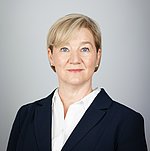This study from the WIK 2023 research program analyses how best practices of LoRaWAN applications can be used to increase energy efficiency in public properties. Based on 121 identified LoRaWAN projects, six case studies were selected and analyzed regarding their contribution to energy saving. The results show that initial trials and pilot projects in many municipalities have given way to permanent installations: after initial tests, a promising implementation phase has begun.
A LoRaWAN sensor network is a license-free solution that can be implemented quickly and cost-effectively to digitally collect consumption data for electricity, gas and heat and make it centrally accessible. The network can be expanded as required with sensors and gateways. It forms a basis for data analysis and therefore for intelligent building and energy management. However, as the systems do not comply with the Act on Metering Point Operation and Data Communication in Smart Energy Networks in general, they cannot be used for billing. However, the example municipalities successfully monitor consumption and, in some cases, realise cost savings in the four to five-digit range. Municipalities of all sizes are also using the advantages of LoRaWAN for other future-oriented smart city applications. The solutions are being expanded by local authorities, municipal utilities, and specialised IT service providers. The costs are based on customer requirements in terms of sensor selection and gateways, installation costs and offers for data processing and visualization, maintenance, and further implementation of measures. Initially, the initiators of the projects often rely on subsidies. Longterm operation is usually still undefined. Business models such as subscription-based models can be customised according to the specific needs and priorities of a municipality and combined with other services.



